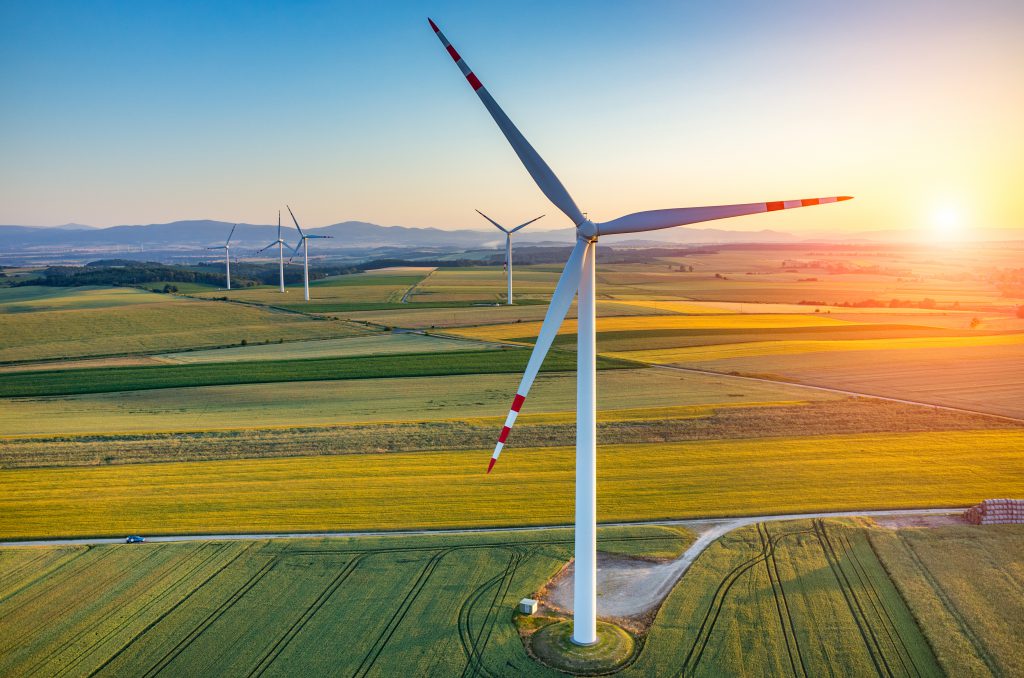Infrastructure
Travelling The Renewable Energy Route
South Africa’s energy sector is slowly falling into line with the rest of the world when it comes to reducing its dependence on fossil fuels, as it begins to travel the renewable energy route. The country is, after all, endowed with solar, wind, hydro and biomass energy sources. The central and western regions of the country have an abundance of wind and solar resources, while some of the central and south-eastern parts are well suited to small hydro and biomass.
Of course, the country also has several newly built coal-fired stations that will inevitably have a long lifespan, and there remain concerns that with unemployment as it is, the country may not be able to afford to eliminate the many jobs associated with coal.
According to Jo Dean, chairwoman of the SA Photovoltaic Industry Association (SAPVIA), the country’s National Development Plan (NDP) actually envisages that by 2030, the country will have made headway in transitioning to a society that is just, inclusive, sustainable and resilient. This will be achieved by developing pathways for the transition to a low-carbon, climate-resilient society.
“It is important to note that upcoming renewable projects are not causing the closure of the coal chain and resultant job losses. In fact, five of Eskom’s power stations have planned decommissioning before 2025, and the objective of the Department of Energy (DoE) in revising the energy mix is to align the creation of quotas for clean energy to take up this demand supply,” she says.
Brenda Martin, CEO of the South African Wind Energy Association (SAWEA), says in line with the NDP goals, SA should resume its utility-scale renewable power procurement programme in order to immediately benefit from the continuing decline in renewables prices achieved globally.
“We are heading towards a major energy transition, something that will be punctuated by two critical tipping points. The first will be when new renewables become cheaper than new thermal generation technologies. The second tipping point will occur when new renewables become cheaper than running existing thermal plants. Big energy hubs like the US, China and Germany are expected to reach this point by the early 2020s,” she says.
Coal versus renewables
National power blackouts and unprecedented tariff increases over the past 12 years have taken a toll on electricity demand, the economy and jobs, says Martin. SA’s over-reliance on coal-fired electricity is clearly exposing the country to significant socio-economic and environmental risks that can no longer be sustained.
“Furthermore, Eskom’s older coal-fired stations are currently exempt from meeting the country’s environmental standards and are negatively impacting the health and environments of local communities. SA cannot continue to underplay the negative impacts of coal power supply on human health and on the environment, particularly when much cheaper, cleaner, job-creating renewable supply options are now readily available.”
The country has plentiful wind and solar resources to diversify and strengthen the power mix, she adds, along with clear evidence that renewable power costs are competitive with that of new coal. Energy investment choices made in the updated integrated resource plan (IRP) will have long-term effects for consumers, the natural environment and the economy as a whole.
“It is essential that the final IRP is based on choices that are in the national interest and that see South Africa get into alignment with the global energy transition that is well under way. SAWEA certainly looks forward to seeing a base case selected for a cost-optimal build and technology mix in support of private sector inclusion, socio-economic development and environmental sustainability.”
Getting local government in on the act
Earlier this year, the SA Local Government Association (SALGA) held an Energy Summit which outlined that energy was at a tipping point, where critical decisions must be made and government would have to embrace this transition, unless it wanted to take the chance that the industry became unsustainable.
Dr Willem de Beer, member of the Ministerial Advisory Commission on Energy, points out that SA remained the 14th worst pollutant in the world, due to its high dependence on coal.
“While there are many initiatives around the globe aimed at reducing greenhouse gas emissions, it will take strong cooperation from all three levels of government if the country is to successfully overcome its energy challenges,” he says.
“We need new solutions to demonstrate that we are willing to change the way we do things and we need to understand that the road to true equity and emancipation of all the citizens of South Africa lies in energy.”
There are, he explains, clearly many new opportunities available in the energy sector, particularly in the renewables space, which in turn affords opportunities for municipalities to form public-private partnerships (PPPs) with willing businesses.
“In turn, it will be necessary to empower municipalities to enable them to undertake such PPPs. Other opportunities include charging stations for electric vehicles; power trading; using infrastructure for other revenue; waste to energy; mini-grids, such as solar and wind; servitudes and wayleaves; small-scale embedded generation; and smart and prepaid meters.
“One thing that is vitally important is that whatever opportunities we consider, we need to also think about the employment issues around it. Remember that if we are replacing one form of generation with another, we must always consider the people who work in that particular sector,” suggests De Beer.
What about jobs?
SAPVIA’s Dean is quick to point out that investment in skills, technology and institutional capacity will be critical to support the development of a more sustainable society, via the transition to a low-carbon economy.
“There is no doubt that focused, institutionalised capacity building and management structures are needed. At the same time, we must remember that the development of environmentally sustainable green products and services, including renewable energy technologies, will contribute to the creation of jobs in niche markets, where SA can possibly even develop a competitive advantage,” she says.
“The transition to renewables will certainly create new jobs, investment and local business opportunities. SA’s manufacturing and construction industries in particular stand to benefit immediately from the recently concluded power purchase agreements.”
The recovery and growth of the domestic manufacturing industry is particularly critical, she continues, given its potential to increase investment, create jobs and drive down the price of renewable technology.
Dean adds that transitioning to a sustainable and resilient economy and society will require systemic and structural changes. These should also see the use of the country’s natural resources – including water and energy – in such a way that this results in appropriate economic and social development, so as to address the triple challenges of inequality, poverty and unemployment.
“As South Africa moves away from an energy mix dominated by fossil fuels, there is no doubt that there will be a number of socio-economic challenges, particularly for those workers in legacy energy systems. This is why it is imperative that adequate resources are given to planning for a just energy transition,” she concludes.






 Sign-up and receive the Business Media MAGS newsletter OR SA Mining newsletter straight to your inbox.
Sign-up and receive the Business Media MAGS newsletter OR SA Mining newsletter straight to your inbox.